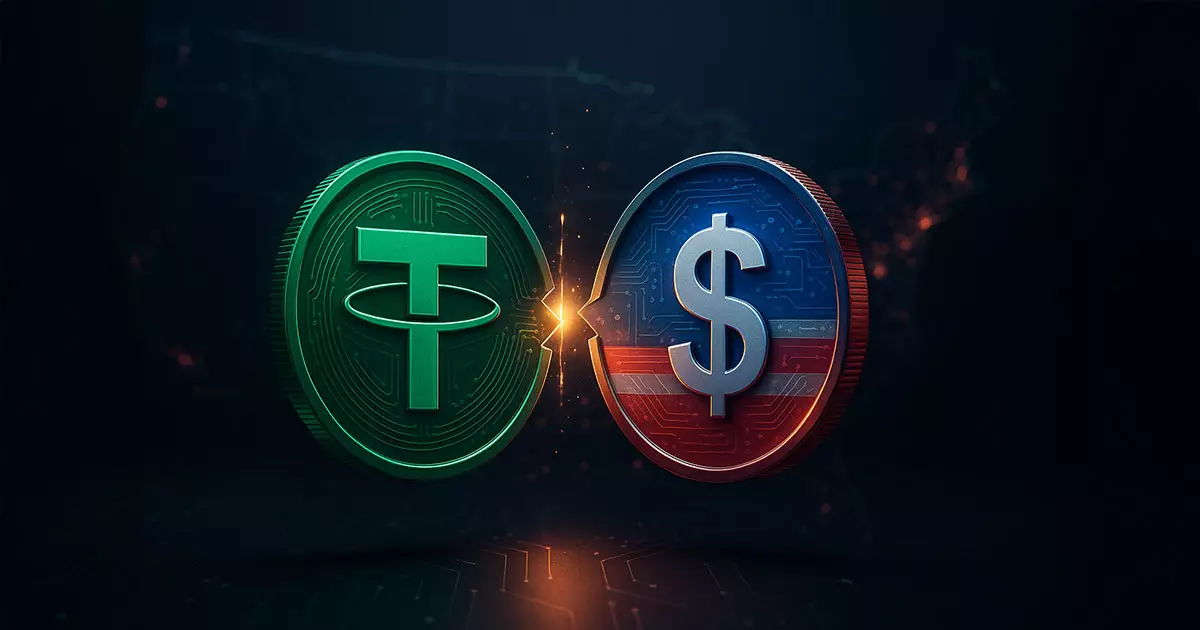In the rapidly changing landscape of digital currencies, Tether’s CEO Paolo Ardoino recently revealed the company’s interest in launching a domestically issued stablecoin catering to the United States market. This announcement arrives at a pivotal moment, as the U.S. government pushes forward with the introduction of the Guiding and Establishing National Innovation for US Stablecoins Act (GENIUS Act). While many may see this as just another move in the expansive world of cryptocurrencies, there is a deeper implication suggesting that the U.S. financial system must evolve to remain relevant and efficient.
It’s crucial to emphasize that Tether’s focus is not solely on satisfying regulatory expectations; rather, it’s an acknowledgment of an existing gap in the American financial system. A significant portion of the U.S. population is either unbanked or underbanked, and Tether appears poised to leverage this economically advantageous niche. By establishing a domestic stablecoin, Tether is not merely compliant; it is aggressive in pursuit of a vision that could revolutionize how digital transactions are executed in the States.
The Necessity for Compliance and Differentiation
Ardoino’s comments about Tether’s commitment to compliance with the GENIUS Act are revealing. He has previously expressed concerns about the European Union’s Markets in Crypto-Assets (MiCA) regulation, which requires stablecoin issuers to hold a significant portion of their reserves in cash deposits at European banks. The implications here are twofold: first, the U.S. financial landscape is distinct in its need for a different breed of financial innovation, and second, Tether believes that the GENIUS Act offers a more sensible pathway forward.
Tether’s willingness to adapt and design a stablecoin specifically for the U.S. market reflects the growing recognition of regional distinctions in the cryptocurrency ecosystem. The operational features of this stabilecoin would be tailored to meet domestic needs that differ vastly from those in emerging markets. It’s a move that, if executed well, could set Tether apart in a cluttered marketplace, positioning them as a leader rather than just a player in the financial game.
Emerging Markets vs. American Demographics
In his analysis, Ardoino noted that the core markets for the USDT stablecoin remain emerging economies, where the unbanked population often relies on stable digital currencies for remittances and savings. However, the U.S. is vastly different. With “traditional” banking methods at people’s disposal, Ardoino argues that the use cases for a stablecoin like USDT in the U.S. would differ, focusing more on features aimed at the unbanked population rather than enhancing everyday transactional efficiency.
This divergence illustrates a significant opportunity for Tether to cater to those Americans who remain on the periphery of the conventional banking world. There’s a seriousness to Ardoino’s approach: he envisions a digital dollar in the form of a stablecoin tailored to the unique dynamics of the U.S. economy. This adaptability is commendable and may catalyze a new standard in how cryptocurrencies are perceived and utilized across the globe.
The Impacts of Regulatory Clarity
The evolution of Tether’s stablecoin strategy rests heavily on the regulatory frameworks that form the backbone of the GENIUS Act. Ardoino’s acknowledgment of the importance of regulatory clarity highlights the broader conversation about how digital currencies should be governed. Properly structured regulations have the potential to foster innovation while simultaneously protecting consumers.
In an increasingly volatile world of cryptocurrency, regulatory clarity isn’t just a bureaucratic hurdle; it’s a necessity for ensuring stability and trust. If Tether’s domestic stablecoin ensures compliance with the highest standards of financial governance, it could pave the way for a more robust crypto-economy built around trust, stability, and inclusivity.
A Stake in the Future of Finance
Tether’s plan for a domestic stablecoin serves as a valuable pitch to U.S. policymakers. By presenting an innovative approach to address the needs of the unbanked population while simultaneously complying with anticipated regulations, Tether aligns itself not just as a player in the cryptocurrency field but as a stakeholder advocating for financial inclusion.
However, the challenge remains; will Tether be able to pull off this ambitious project without running into regulatory roadblocks or market backlash? Regardless, the potential benefits of a U.S. stablecoin could resonate far beyond the company itself, influencing how digital currencies take root in American society and perhaps even leading to more comprehensive financial reform in the future. Through Ardoino’s vision, we may not just witness Tether’s evolution, but also the evolution of the entire financial landscape as it adapts to modern needs.















